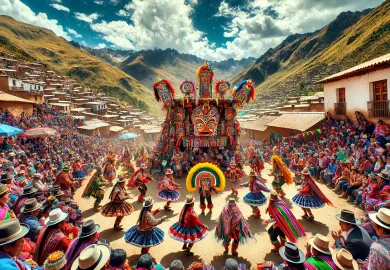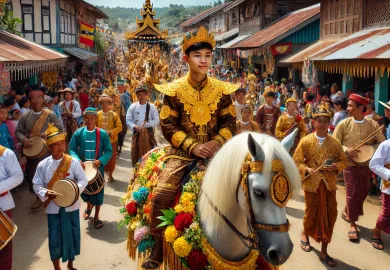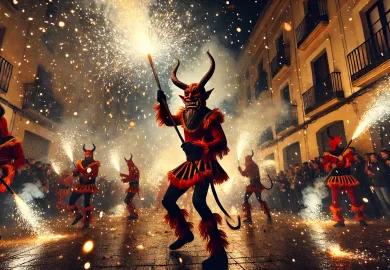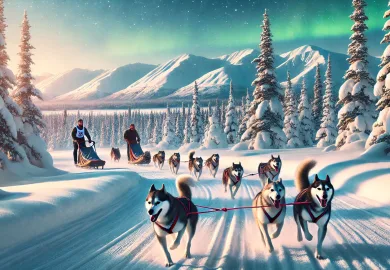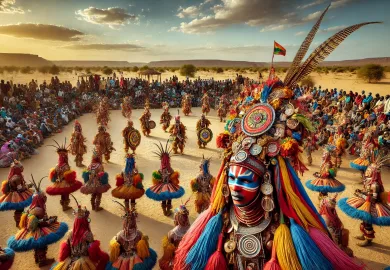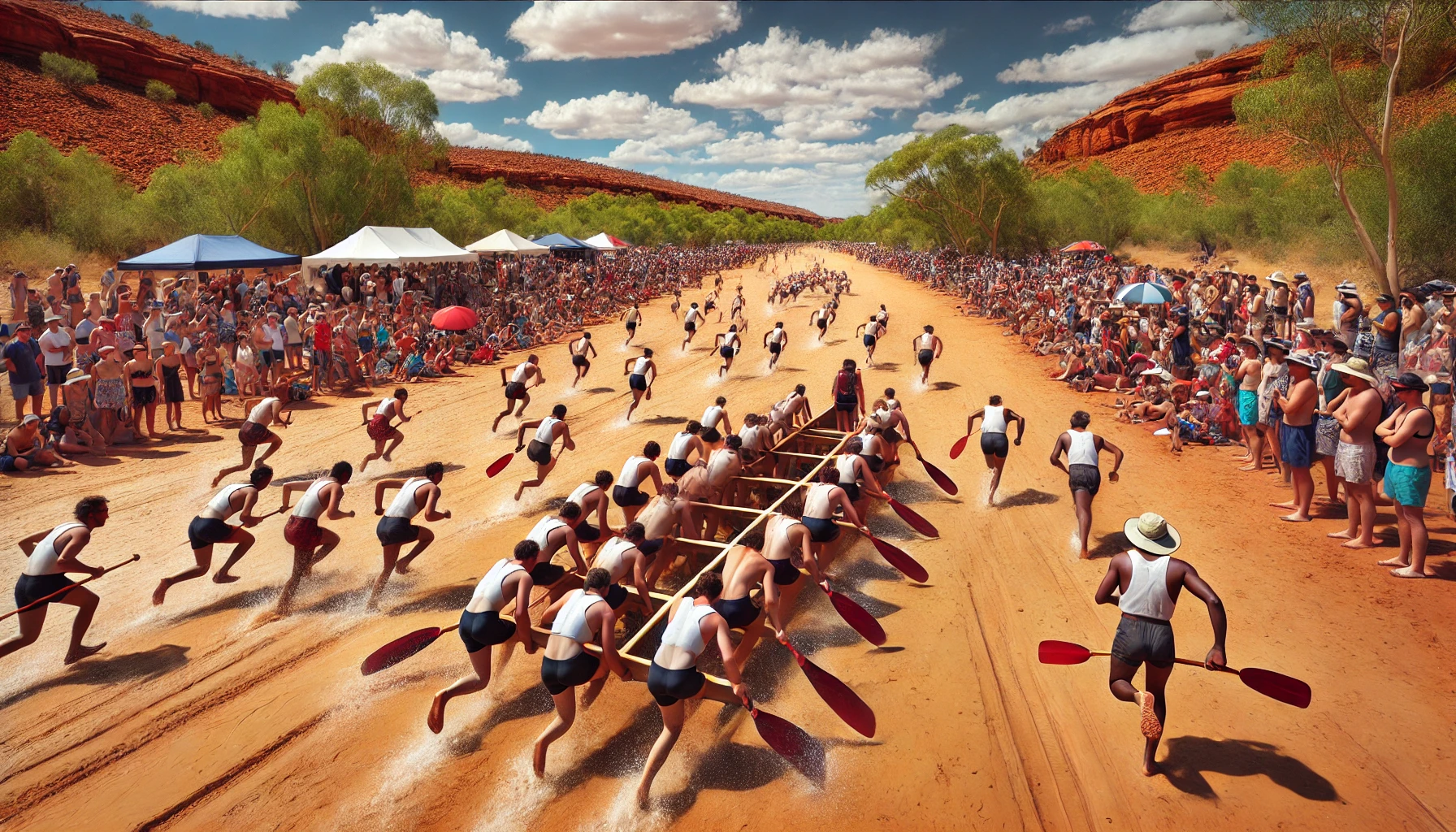
The Henley-on-Todd Regatta in Alice Springs, Australia, is one of the most unique and eccentric events in the world. Unlike any other boat race, this regatta takes place on the dry riverbed of the Todd River. Without a drop of water in sight, teams race in bottomless boats, running across the sand in a celebration that mixes humor, creativity, and a healthy dose of the absurd. This event has captured the hearts of locals and tourists alike, becoming a must-see spectacle in the heart of the Australian Outback.
The History and Origins of the Henley-on-Todd Regatta
The Henley-on-Todd Regatta was first conceived in 1962 by the Rotary Club of Alice Springs. Inspired by the traditional Henley-on-Thames regatta in England, the Australian version took on a distinctly different character. With no river to speak of, the Todd River was an ideal location for an event that would celebrate the dry, arid conditions of the Outback while also providing a humorous twist on the classic boat race.
The inaugural event was a success, drawing locals and curious onlookers who were eager to see how a regatta could be held without water. The early races featured makeshift boats, with participants using their legs to “row” across the sandy riverbed. Over the years, the event has grown in popularity, attracting thousands of spectators and participants from around the world.
Today, the Henley-on-Todd Regatta is an annual event that continues to delight audiences with its blend of creativity, competition, and light-hearted fun. It is a testament to the ingenuity and humor of the people of Alice Springs, who have turned a dry riverbed into the site of one of Australia’s most beloved events.
The Unique Events and Races of the Regatta
The Henley-on-Todd Regatta is not just a single race but a series of events that showcase the creativity and enthusiasm of its participants. The regatta features various categories, each with its own unique twist on the traditional boat race. Some of the most popular events include:
The Bottomless Boat Races: The signature event of the regatta, the bottomless boat races see teams of competitors carrying boat frames, running across the sandy riverbed as if they were rowing. These “boats” are often elaborately decorated, with themes ranging from pirates to superheroes. The races are fast-paced, chaotic, and filled with laughter as teams navigate the dry river, often tripping over each other in their efforts to reach the finish line.
The Battle of the Boats: In this event, teams armed with flour bombs, water pistols, and other harmless weaponry engage in a mock naval battle on the dry riverbed. The goal is to disable the other teams’ boats and capture their “vessels.” The Battle of the Boats is a crowd favorite, with participants donning costumes and engaging in spirited combat, all in good fun.
The Sand Shoveling Races: Another quirky event, the sand shoveling races, involves teams digging their way across the riverbed. This event highlights the challenges of living in the Outback, where sand and dust are a constant presence. It’s a test of endurance and teamwork, with participants working together to move sand as quickly as possible.
The Community Spirit and Charity Behind the Event
While the Henley-on-Todd Regatta is undoubtedly a fun and entertaining event, it also has a deeper purpose. The regatta is organized by the Rotary Club of Alice Springs, and all proceeds from the event go to charity. Over the years, the regatta has raised significant funds for local and international causes, supporting a wide range of charitable initiatives.
The community spirit that drives the regatta is one of its most endearing qualities. Local businesses, schools, and community groups come together to participate in the event, whether by competing in the races, volunteering their time, or providing sponsorship. The regatta is a celebration of the unique culture and resilience of the people of Alice Springs, who have made the event a symbol of their town’s vibrant and welcoming community.
In addition to supporting charity, the regatta also plays a vital role in promoting tourism in Alice Springs. The event attracts visitors from around the world, providing a boost to the local economy and showcasing the beauty and charm of the Australian Outback. For many tourists, attending the Henley-on-Todd Regatta is a highlight of their trip to Australia, offering a glimpse into the humor and creativity that define the region.
Preparing for the Henley-on-Todd Regatta: What You Need to Know
If you’re planning to attend the Henley-on-Todd Regatta, there are a few things you should know to make the most of your experience. The event typically takes place in August, during the cooler winter months in Alice Springs. This is an ideal time to visit the region, as the weather is mild, and the risk of extreme heat is lower.
When attending the regatta, it’s important to come prepared for the desert environment. Sunscreen, hats, and plenty of water are essential, as the sun can be intense even in winter. Comfortable clothing and footwear are also recommended, as you’ll likely spend a lot of time on your feet, moving between the various events and races.
Tickets for the regatta can be purchased in advance, and it’s a good idea to do so, as the event can attract large crowds. The regatta is a family-friendly event, with activities and entertainment suitable for all ages. Whether you’re a spectator or a participant, you’re sure to enjoy the lively atmosphere and the chance to be part of one of Australia’s most unique traditions.
For those interested in participating in the races, there are usually opportunities to join a team or enter as an individual. Whether you’re a seasoned runner or just looking for a bit of fun, the regatta offers something for everyone. Just be prepared to get a little sandy and to embrace the spirit of friendly competition.
The Henley-on-Todd Regatta is more than just a boat race; it’s a celebration of the creativity, humor, and community spirit that make Alice Springs such a special place. Whether you’re a local or a visitor, the regatta is an experience you won’t want to miss, offering a unique perspective on life in the Australian Outback.
In conclusion, the Henley-on-Todd Regatta is a truly unique event that captures the essence of Australian ingenuity and humor. It’s a day filled with laughter, creativity, and a sense of community that brings people together in the most unexpected of places—a dry riverbed in the heart of the Outback. So, if you ever find yourself in Alice Springs in August, make sure to check out this one-of-a-kind regatta. You won’t find anything else quite like it in the world.

